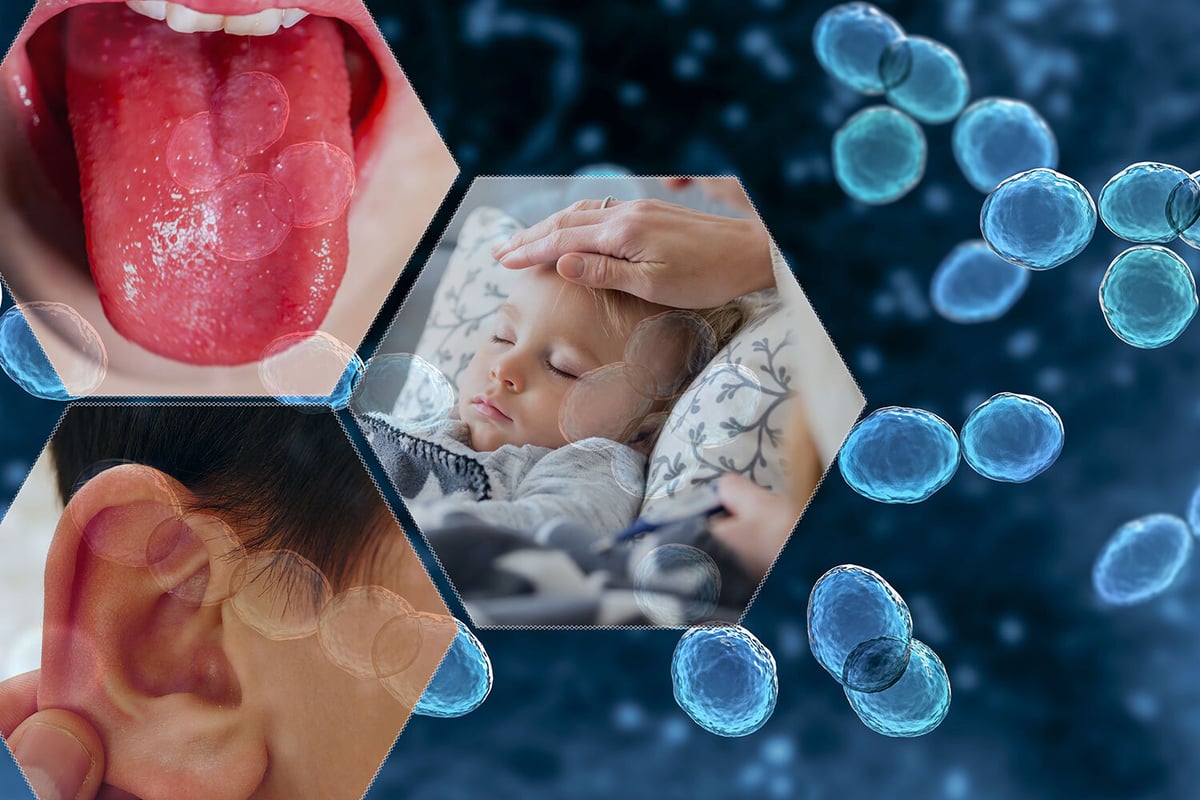A rise in the cases of invasive group A streptococcal disease (iGAS) has been observed across various age demographics in South Australia. The most significant surge is notable among children below the age of 10.
iGAS, resulting from Group A streptococcus (GAS) infection, is frequently associated with skin and throat infections. Manifestations of the disease may encompass bacteraemia, sepsis, empyema, osteomyelitis, septic arthritis, meningitis, puerperal sepsis, and severe conditions like streptococcal toxic shock syndrome (STSS) and necrotising fasciitis.
Symptoms/signs – general
- Fever and chills
- Dyspnoea and chest pain
- Muscle pain, myalgias & muscle tenderness
- Rapidly spreading skin infection
- Redness or skin flushing (sunburn-like)
- Dizziness or light headedness
- Nausea, vomiting, abdominal pain, diarrhoea
- Peripartum women – bleeding or purulent vaginal discharge
Symptoms/signs in children
- Cold or mottled limbs
- Limb pain
- Not wanting to walk
- Poor feeding
- Lethargy
- Increased work of breathing
- Tachycardia
- Reduced urine output
People at increased risk of iGAS
- Infants and young children
- Adults 65 years and older
- Persons with recent diagnosis of impetigo, streptococcal pharyngitis, or scarlet fever
- Persons who have been in close contact with someone with GAS in the past 30 days
- Peripartum women
- Persons living in crowded households
- Aboriginal and/or Torres Strait Islander persons
- Persons who inject drugs
- Persons who are immunocompromised
Dr Marianne Gillam – Acting Deputy Director, Communicable Disease Control Branch
For all enquiries, please contact the CDCB on 1300 232 272.
Medical practitioners are advised to:
- Be Alert for iGAS infection particularly in those at increased risk of GAS, and in children or adolescents who are more unwell than expected for a viral illness.
- Undertake usual testing to exclude other causes of sepsis. Take blood for culture and PCR, and in suspected meningitis, CSF (at least 1 mL) for PCR and culture.
- Arrange urgent transfer of suspected cases of iGAS to an emergency department (ED), with clear communication of concerns about potential sepsis/iGAS.
- Provide early resuscitation and empiric antibiotics if required. Follow the applicable sepsis pathway for adults or children.
- If a decision is taken to discharge a patient, encourage patients/carers to urgently present to the Emergency Department of the closest hospital if symptoms worsen or progress rapidly. Deterioration may be sudden.
- Notify Communicable Disease Control Branch of confirmed cases of iGAS.
- Provide information to patients. See www.sahealth.sa.gov.au/YouveGotWhat
- Counsel household contacts of iGAS patients about their increased risk of iGAS. Consider chemoprophylaxis for household contacts: seek infectious diseases specialist advice.
- Promote routine vaccinations including varicella and influenza for eligible patients. iGAS may follow infections caused by other pathogens such as varicella or influenza.

